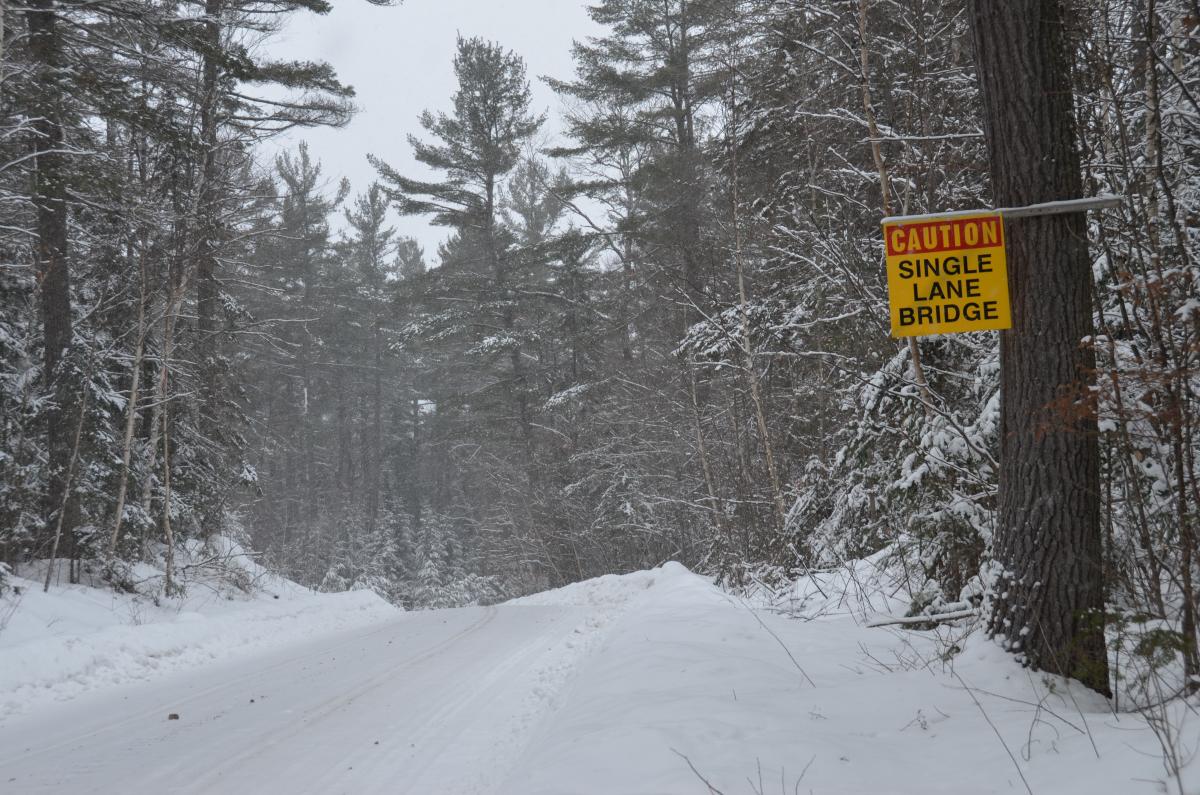
On low-traffic roads it’s easy to be lulled into a sense of security, but winter weather and road conditions offer new challenges for drivers
The following real-life logging road incidents show a sampling of winter driving scenarios you might run across. In each case, it was a typical day at work until the driver was confronted with a sudden change of plan.
- At approximately 6:30 on a winter morning, a driver operating a loaded truck was heading northbound approaching a bridge on a haul road. The road was busy and was well-packed and plowed. Coming from the opposite direction was a pickup truck that was in contact on the FM two-way radio with a second northbound loaded truck operated by a co-worker. The northbound driver indicated to the pickup truck driver that it was OK for the pickup to proceed down the hill onto the bridge. The two drivers in radio contact were unaware of the first truck driver. The first truck driver was caught between the two other trucks approaching the same bridge. Unable to avoid collision, the first log haul truck slid over the bridge rail into the river. The driver’s body was recovered the next day.
- On an early morning in November, two silviculture workers were traveling to a slash-pile burning site in a one-ton truck. The driver lost control of the truck on a downward sloping S-curve. The truck left the roadway and slid into the ditch. The vehicle rolled three or four times, ejecting the passenger who suffered head injuries and broken ribs. The driver suffered minor cuts and bruises. Neither the driver nor the passenger was wearing a seatbelt.
- On a cold January day, a log truck loaded with tree-length jack-pine was travelling on a logging road when the back tier of the load slid off the trailer and into the path of an oncoming service truck. The driver of the service truck later died from his injuries.
Be prepared for winter driving conditions
Ice and snow sometimes add a winter dimension to driving on logging roads early and late in the hand-tending or brush-burning season. Muddy and frozen roadways, increased animal movement, and snow and ice cover can complicate matters; it is crucial to keep windows clean for visibility.
During winter, remember:
- Emergency equipment you should have in your vehicle: candles, matches, flares, non-perishable food items, flashlight, gloves, blankets, shovels
- Roads in winter are narrow, sightlines are reduced and communication becomes more important
- Travel in winter storms is not recommended
- Snow hampers visibility
- Reduce your speed
- Leave more space between vehicles
- Keep lights clear at all times
- Consider using studded tires or tire chains
- Use extra caution on unsanded stretches of logging roads
- Be aware of icy conditions
- Your vehicle should be reliable, safe and well-maintained
Sharing the road with snowmobilers
Logging roads in northern Ontario are built, used and maintained to a high degree by forestry firms, but because almost all of the roads are on Crown land, the companies have no legal power to control use of the road by members of the public.
Cottagers, hunters and anglers often use logging roads as access routes. Snowmobile trails cross the roads and snowmobile clubs occasionally use portions of roads as connecting routes from one segment of a trail to another. Individual snowmobilers also sometimes use old logging roads as unofficial trails.
The presence of this additional traffic on logging roads – especially in winter, when visibility is often poor and roads are snow-packed and icy – is a cause of concern. It’s important for companies to actively communicate with local snowmobilers. As for individuals who sometimes snowmobile on logging roads, the Ontario Federation of Snowmobile Clubs recommends that snowmobilers buy a trail permit and ride on official OFSC trails.
Resources
Video: Forest Products Load Security
